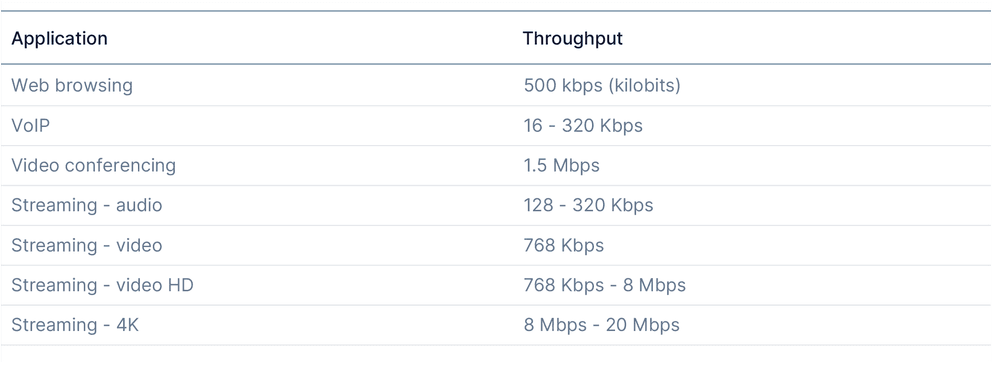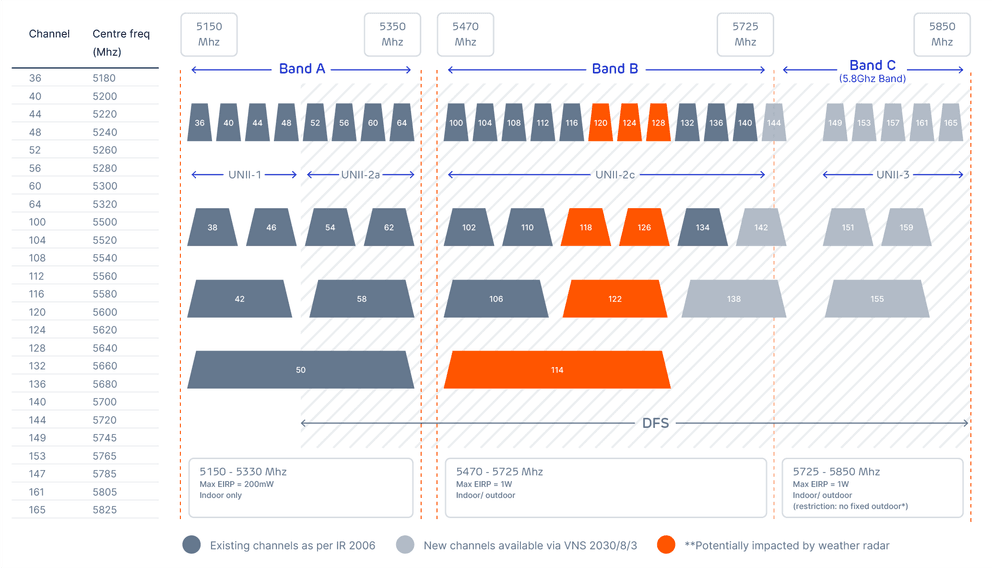
Insight
Technology Strategy
Enterprise Networking
The Wireless Only Office
1 December 2021

The Wireless Only Office
The workplace is changing. Many corporate offices no longer suit the traditional model of a wired computer on every desk. More employees are working remotely with only a few days a week in the office. The office space and wireless requirements, therefore, need to adapt to this. We see a growing need from our customers for more hot desks and collaborative working spaces. There is also a requirement to allow office users to distance themselves from each other and for teams to work collectively.
The IT network connectivity that suits this new requirement is wireless only, also known as wireless first or Wi-Fi (WiFi) first. What’s involved in the transition to a wireless only office? What are the business benefits to wireless only? What are the security concerns of the Wi-Fi network when using wireless only? We have answered some of these questions in our Wi-Fi & Wireless Network FAQS. Forfusion can help you navigate the wireless only transition process by guiding you through the following stages:
- On-site Analysis Survey of your current network and office space
- Discussion of your requirements now and in the future
- Identification of Wi-Fi requirements based on device capacity and applications
- Identification of user-specific needs – not all users are the same
- Design proposal specifically to meet your requirements and environment
- Deployment based on the agreed design and timescale
- Verification of the deployment and documentation
- Transition into Business as Usual (BAU) service.
The advantages of a wireless only office
The main advantage of a wireless only office is that it complements the hybrid working space. Without the need for a cabled workstation dedicated to one member of staff, workspaces can be re-purposed daily. Other advantages include:
- Reduced cabling to desks
- Reduced switching hardware
- Freedom for users
- Device location tracking capabilities
The disadvantages of a wireless-only office
The disadvantage of a wireless only office is that it will not function properly if it is not meticulously planned and designed. In most cases, if you have a Wi-Fi Access Point (AP) and a WiFi client, it will just work. This is the great thing about Wi-Fi. However, if you are planning for a high-density deployment, proper planning and design is everything. Other disadvantages to be aware of are:
- Susceptibility to interference
- Security must be properly configured
- Radio Frequency (RF) space must be effectively managed and monitored
- Performance is highly dependent on correct design
Considerations for designing a wireless-only office
Many factors need to be considered to ensure that Wi-Fi in a wireless only environment works properly. The following is an outline of the most common considerations:
- Capacity planning
The most crucial consideration. The Wi-Fi network must have the capacity to serve the expected number of clients and their throughput requirements.
- Applications in use
Different applications have different requirements on the network, from high data throughput media applications to low latency requirements of voice applications.
- Client devices in use
Different devices have different requirements on the network; other Wi-Fi technologies are likely to be supported, such as 802.11 a/b/g/n/ac/ax. It’s essential to know how many spatial streams are supported and what additional features are required/supported.
- Are some clients better served with a cable?
For some clients, Wi-Fi is not the best solution. For example, high-performance desktop computers that are not mobile. These types of devices would perform better with a dedicated wired connection, reducing the Wi-Fi network load.
- The Radio Frequency (RF) environment
The RF propagation of the Wi-Fi network must match the environment. The design of which is realised with an on-site survey.
- Most environments have noisy neighbours
The on-site survey will also examine the RF interference. This can be caused by neighbouring Wi-Fi networks or other non-Wi-Fi devices that use the same RF spectrum.
- Physical requirements
There may be cabling constraints or restrictions to where Access Points are mounted due to aesthetic reasons.
- Infrastructure requirements
Power Over Ethernet (POE) requirements must be considered along with the design for Software-Defined Access (SD-Access).
Capacity planning for a wireless-only office
When planning for a wireless-only office, capacity planning is a crucial driver for the subsequent design decisions. In the recent past, the process to design a Wi-Fi network centred around an on-site survey to determine the fewest number of access points that would provide sufficient coverage. The main requirement was the minimum signal strength. Provided that the coverage area met this requirement, the design would be considered a success. This methodology works well for Wi-Fi coverage alone, but it does not consider the network capacity and the many other requirements discussed earlier.
Proper capacity planning starts by correctly understanding the requirements. This planning helps ensure a successful design and will reduce the need for further site surveys and remedial action after deployment. The first step in designing a wireless-only office is calculating the number of access points required to meet the required bandwidth. The required bandwidth comes from calculating the estimated application throughput and device throughput. The following sections outline how to achieve this.
Application Throughput
Usually, there is a primary application that is driving the need for connectivity. Understanding the throughput requirements for this application and any other activities on the network will provide a per-user throughput goal. This required per-user throughput is then used to drive further design decisions. Throughput requirements for some popular applications are as given below:

These examples are only guidelines; it is far better to test the target application and validate its actual throughput requirements. It is also vital to validate applications on a representative sample of the devices to be supported in the Wireless Local Area Network (WLAN). Additionally, not all browsers and operating systems enjoy the same efficiencies. For example, applications that run fine on 100 kilobits per second (Kbps) on a Windows laptop with Microsoft Internet Explorer or Firefox may require more bandwidth when viewed on a smartphone or tablet with an embedded browser and operating system.
Once the required bandwidth throughput per connection and application is calculated, we can calculate the aggregate bandwidth required in the WLAN coverage area. Note that this is often different for different areas of the site. For example, a staff canteen is likely to require much less bandwidth than a conference room. For this example, I will assume 600 users require 8Mbps of throughput each. The aggregate application throughput is calculated using the below-given formula:
(Throughput required) x (Number of concurrent Users) = Application Throughput
8Mbps x 600 users = 4800 Mbps
We now need to find the device throughput that we can realistically provide.
Device Throughput
Many access point (AP) manufacturers will advertise potential throughput that is significantly higher than our requirement of 4.8 Gbps. For example, the latest Cisco 9130 AP boasts physical layer (PHY) data rates of up to 5.38 Gbps. So, do you just need the 1 AP? Unfortunately, not, as this data rate advertisement does not tell the full story. However, we can understand what device throughput we can realistically expect by walking through the whole story.
Firstly, Wi-Fi is based on CSMA/CA (Carrier Sense Multiple Access/Collision Avoidance) and is half-duplex. That means only one device can talk while the other devices are connected to the same AP and have to wait for their turn to access the channel. Hence, simultaneous client count also impacts AP throughput as the available spectrum is divided among all clients connected to the AP.
So, the 5.38 Gbps is already halved and then split between the number of clients per AP. We must also consider that 5.38 Gbps data rate assumes eight spatial streams (8 simultaneous transmissions) with an 80MHz channel width (4 channels bonded together). Most client devices are capable of a maximum of three spatial streams; most mobile devices are capable of two. The 2.4GHz spectrum has only three non-overlapping 20MHz channels, so bonding four is not possible; even the bonding of two is highly discouraged as it will use too much of the available spectrum.

The 5GHz spectrum is better as there are up to 25 non-overlapping channels, though many clients do not support some due to compatibility and weather radar usage. In most cases, channel bonding will allow for 10 x 40MHz channels and 5 x 80Mhz. The figure below shows details of the 5GHz Wi-Fi spectrum: Credit: WifiNigel.com
In high-density deployments such as wireless-only, it is essential to use the lowest number of channel bonds to provide the client throughput requirement. Bonding too many channels will result in fewer channels available and the likelihood of channel re-use. In addition, Channel re-use in the same Radio Frequency (RF) space causes co-channel interference, which reduces the capacity as the channel is shared.
In our example, we will assume that all users will be using a laptop capable of 802.11ac with three spatial streams. There is usually a delay in technology adaption between client devices and infrastructure devices. Therefore, it is reasonable to assume that our clients will be 802.11ac (Wi-Fi 5) capable and our APs are 802.11.ax (Wi-FI 6) capable. For simplicity, we have assumed all users have the same single device. In reality this would not be the case, so there would be added complexity in the following calculations.
The following table gives the maximum 802.11ac data rates expected for the number of spatial streams and channel width:

The actual end device throughput matters to the end-user, which differs from the data rates. Data rates represent the rate at which data packets will be carried over the medium. Data packets contain a certain amount of overhead that is required to address and control the packets. The actual throughput is payload data without the overhead. Also, as discussed earlier, Wi-Fi is half-duplex, so the throughput must be halved. We then must reduce this by 30% to allow for the management overhead. The table below shows the data rates for 20MHz, 40MHz and 80MHz channel widths and the estimated device throughput for each:

Estimate the Number of Access Points
To recap, we have used the following assumptions and requirements in this example:
- Individual client throughput requirement of 8 Mbps
- There will be 600 concurrent users with a single laptop each
- All laptops support 802.11ac and are capable of 3 spatial streams
- The network can be configured to use 20/40/80 MHz channels widths
It is essential to get these assumptions and requirements as accurate as possible, any deviation would result in vastly differing results.
We can now calculate how many APs are needed to satisfy each channel widths’ application capacity. The results are rounded up to the nearest whole number.
(Application Throughput) /(Device Throughput) = Number of Access Points
20MHz
4800 Mbps/101 Mbps = 48APs
40MHz
4800 Mbps/210 Mbps = 23APs
80MHz
4800 Mbps/455 Mbps = 11APs
To help select the appropriate choice, we must also calculate the number of APs based on client count. We can assume that each AP will have two separate radios; these will be either 2.4GHz and 5GHz radios, dual 5GHz radios or a combination of the two. Though, we can assume a client split of 30/70 across the 2.4GHz and 5GHz bands.
Of our 600 clients this gives:
2.4GHz clients = 0.3 x 600 = 180
5GHz clients = 0.7 x 600 = 420
Assuming a maximum of 25 clients per radio:
420/25 = ~17 APs
Now the Number of APs required can be calculated by choosing the appropriate channel width to satisfy the client per AP count.
Number of Access Points = 23 APs
On-Site Wireless Survey
Once we know how many access points are required to match the capacity requirements, we then get onto the tricky bit of working out where to put them. Designing access point placement is very much a balancing act. On one side, we have the requirements for capacity and coverage, and on the other side, we have the restrictions with channel re-use, interference, mounting locations and cabling restrictions. It is, therefore, imperative that a comprehensive On-site Analysis Survey is completed to ensure that the right balance is achieved for your wireless network requirements.
Steven Forrest

FusionCare® Managed Services
IT managed services exactly the way you want them. FusionCare® provides you with robust, flexible and secure IT managed services.
FusionCare®Book Consultation
Simply enter your details below and we’ll contact you to arrange your free 30 minute consultation.